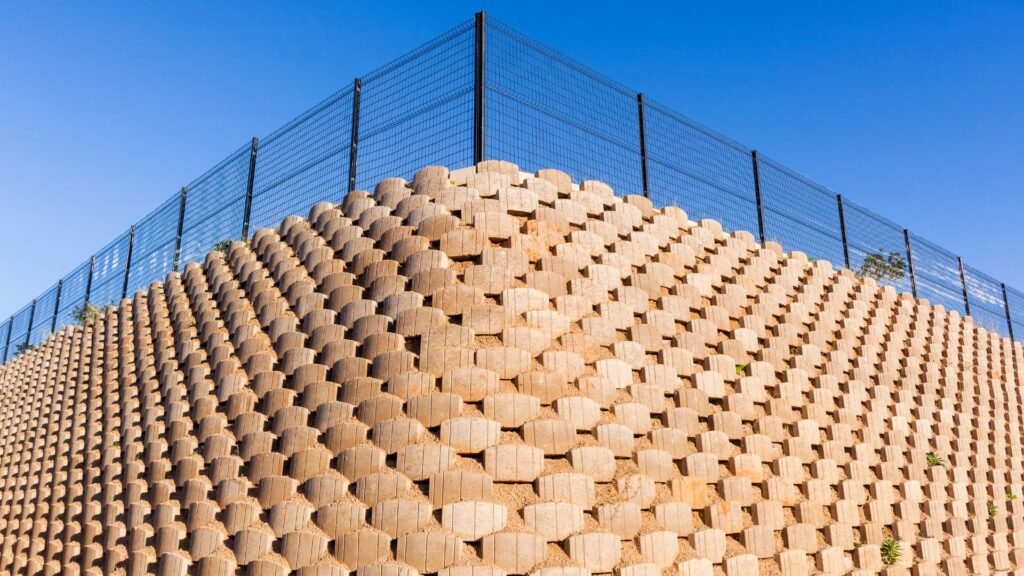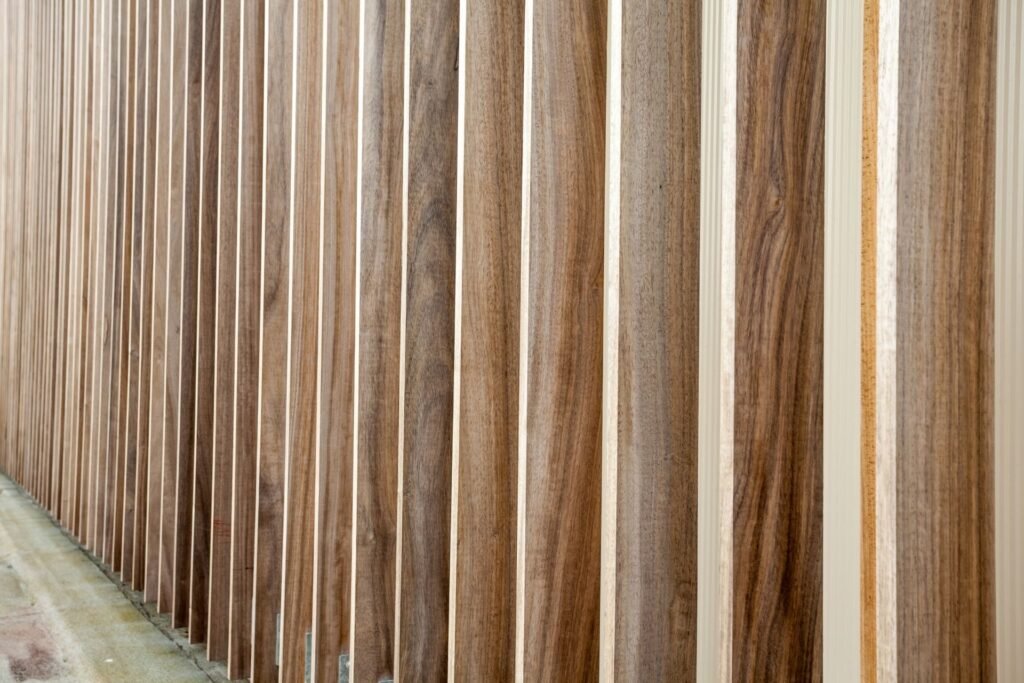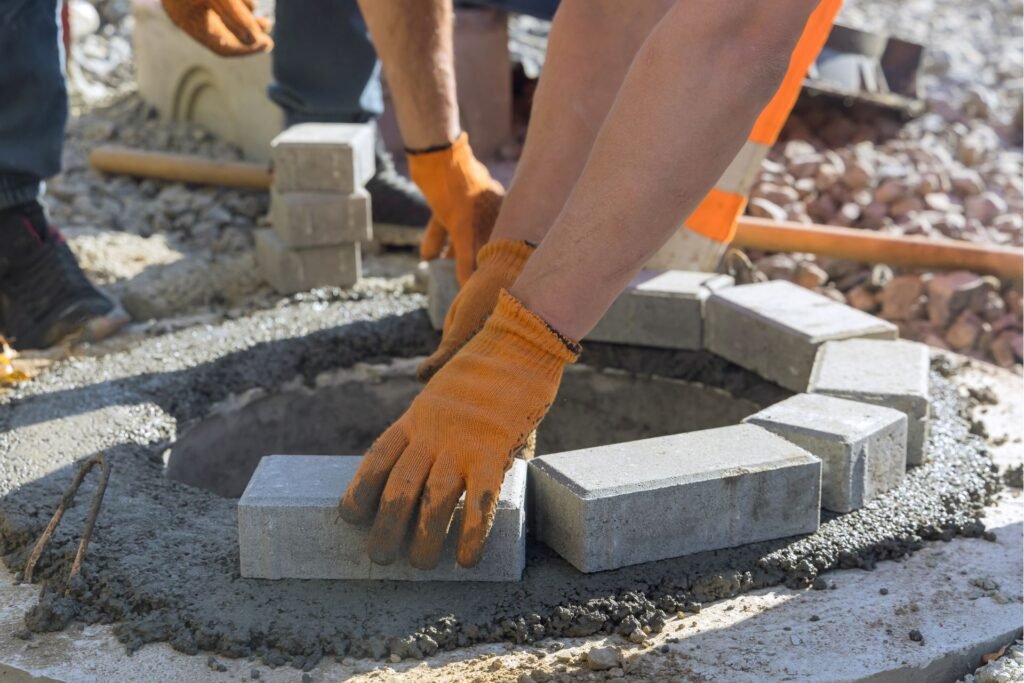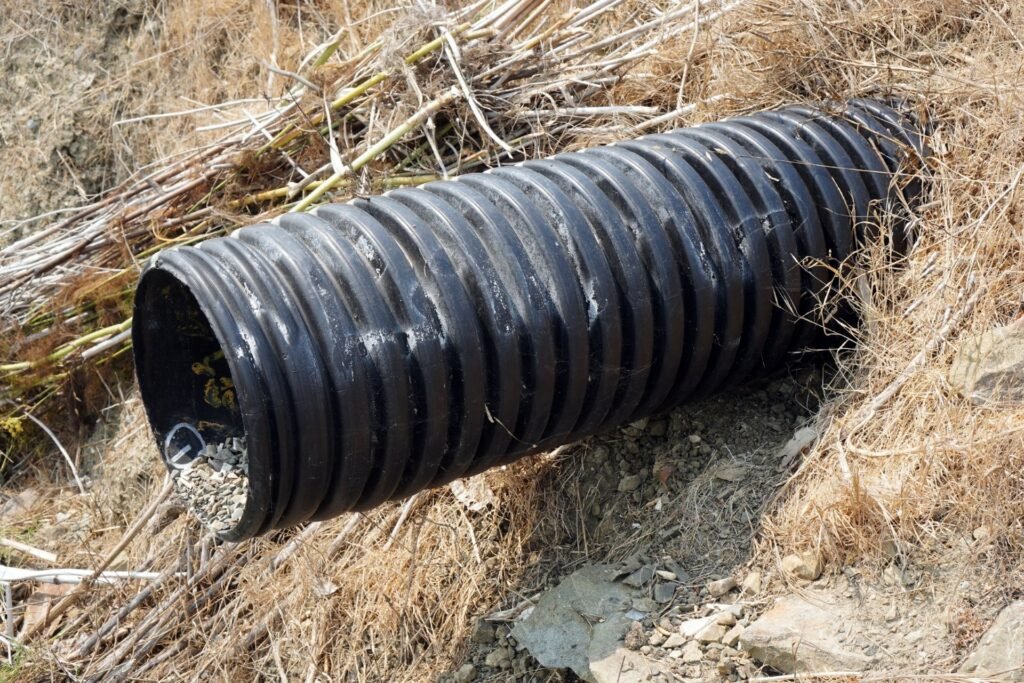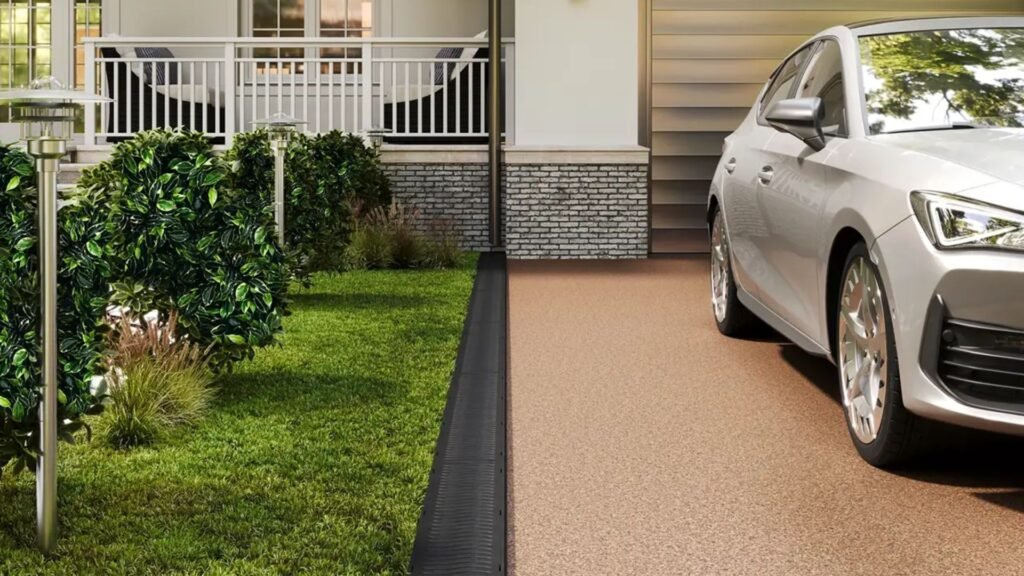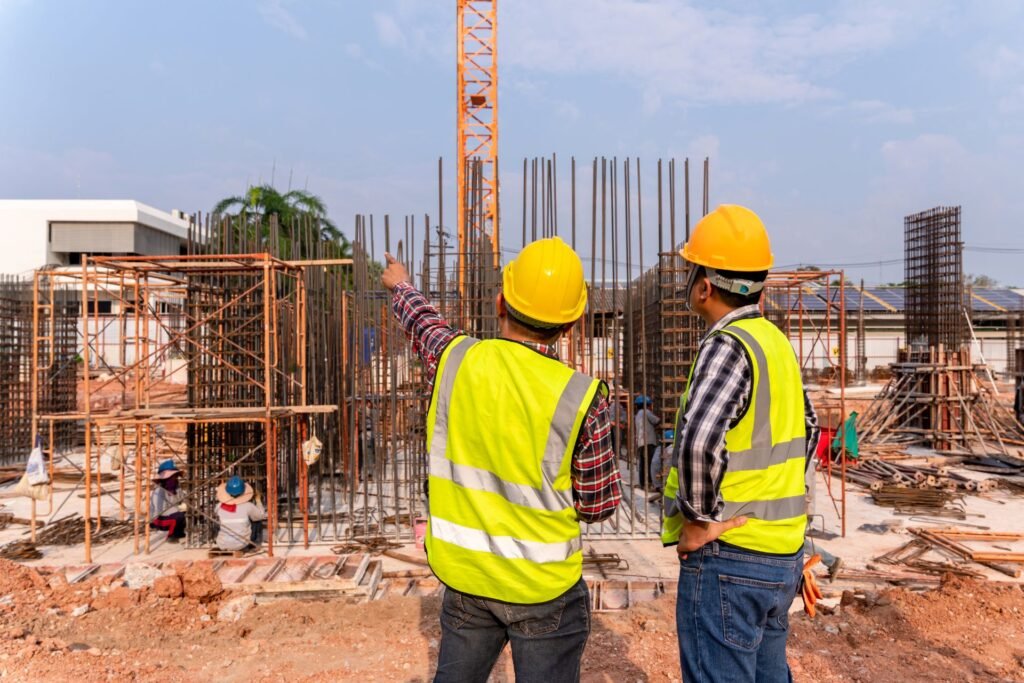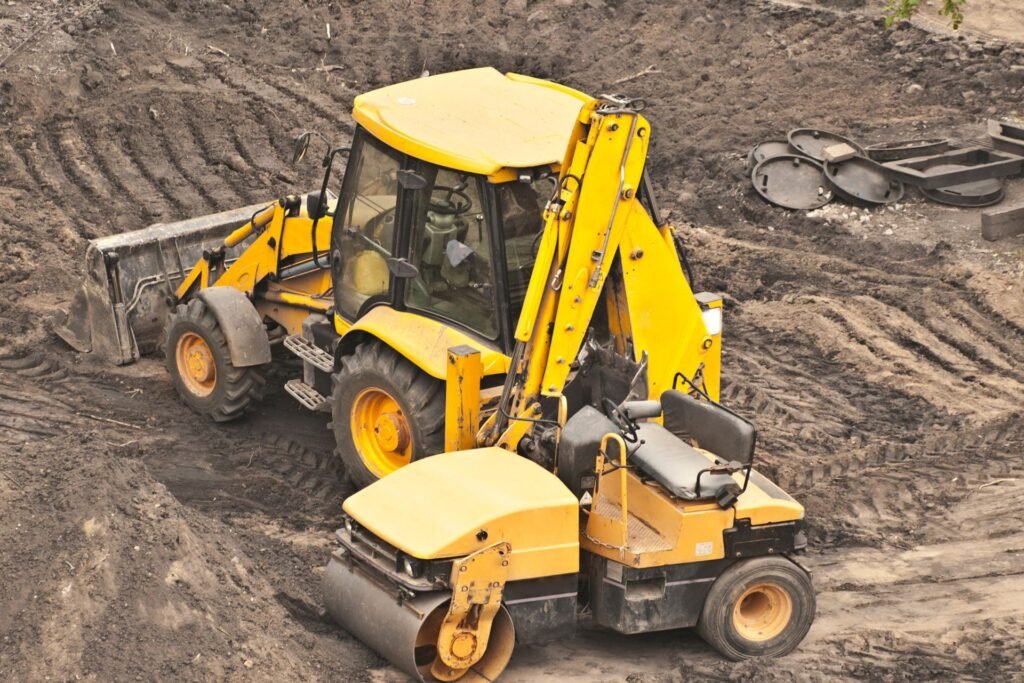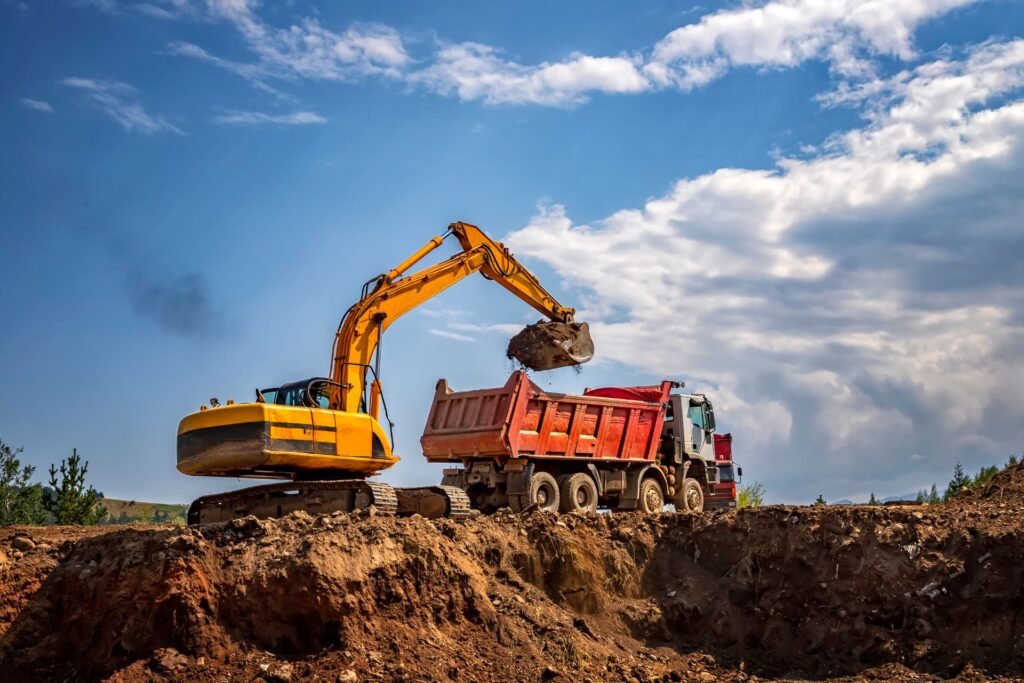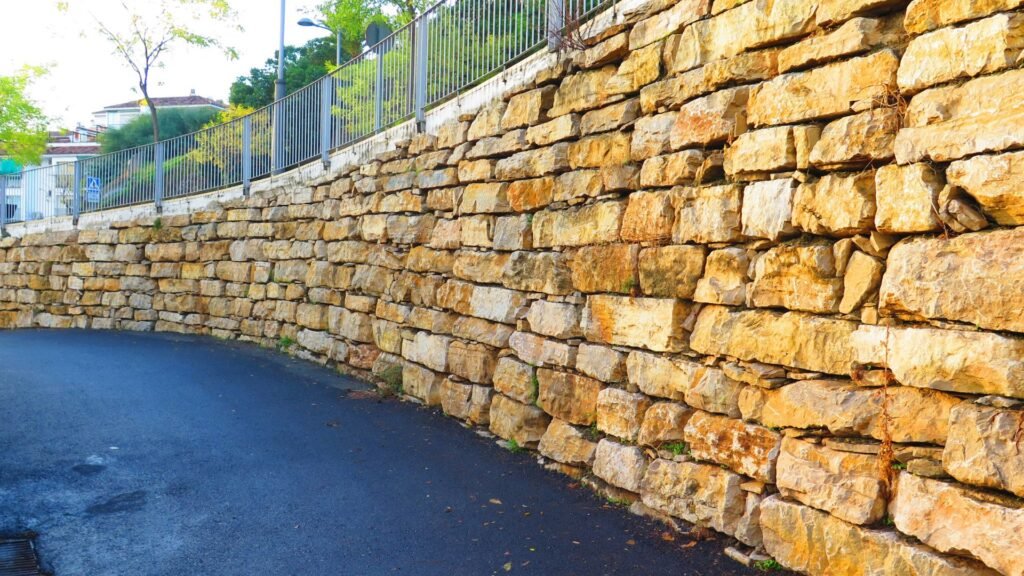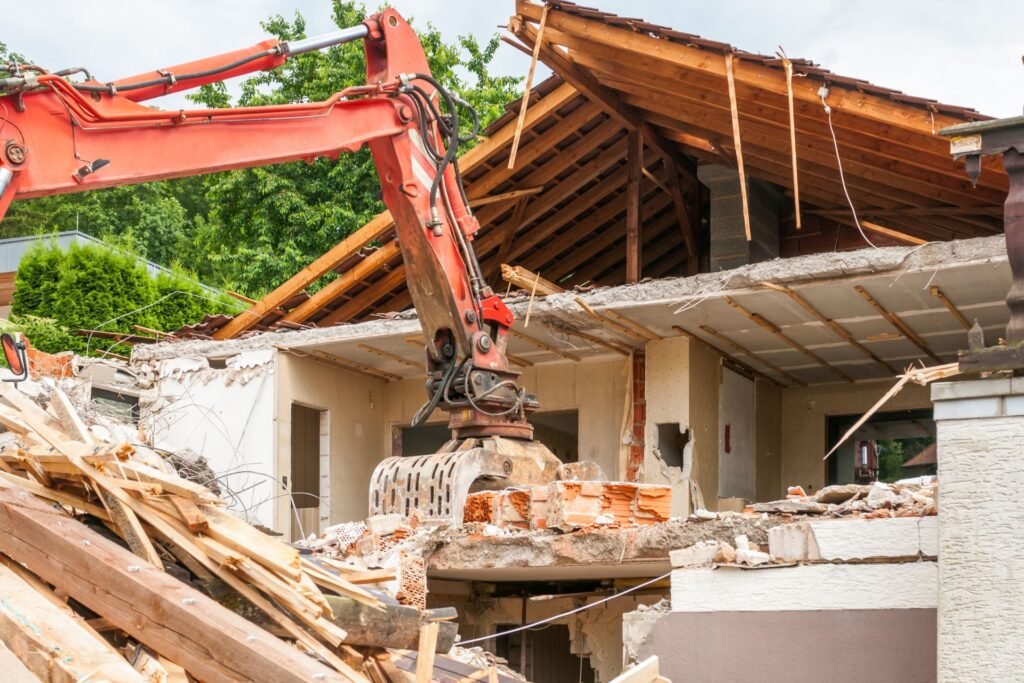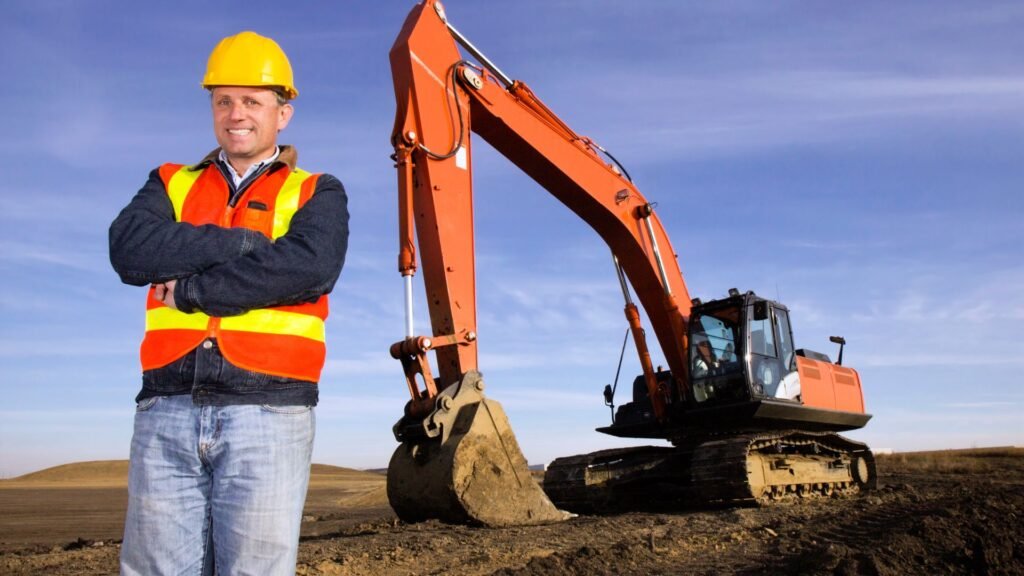Welcome to our thorough tutorial on estimating retaining wall construction costs in New Zealand! Knowing the costs associated with a project is essential for efficient budgeting, whether you’re a homeowner wishing to improve the landscape of your garden or a property developer organizing a large-scale undertaking. In addition to improving the aesthetics of your home, retaining walls are essential for controlling soil erosion, averting landslides, and generating useable space on sloping terrain. To assist you in making wise decisions for your upcoming project, we’ll examine the numerous aspects of retaining wall construction costs in New Zealand in this blog post. These aspects range from labor and materials to design and site preparation.
On average, the cost of building a retaining wall in New Zealand ranges from $150 to $400 per square meter, depending on the materials used, such as timber, concrete, or stone. Additional expenses for labor, engineering, and site preparation can bring the total cost to between $5,000 and $20,000 for a typical residential project.
Table of Contents
What Is A Retaining Wall?
An indispensable construction meant to “retain” or hold soil behind it is a retaining wall. These walls are an essential component of building and landscaping, particularly in areas with sloping or uneven terrain. A retaining wall is essentially a strong wall that allows soil to be held at varying levels on both sides by supporting it laterally. Let’s examine retaining walls, their functions, and typical applications in New Zealand in more detail.
Definition and Purpose
Retaining walls are a flexible solution for both residential and commercial landscapes since they fulfill several functions. Fundamentally, the purpose of a retaining wall is to stop soil erosion, which is the natural process of soil erosion brought on by wind, water, or other environmental elements. Serious problems may result from this erosion, especially in places with heavy rainfall or close to bodies of water. Retaining walls safeguard property and stabilize the landscape by keeping the soil in place.
Retaining walls are essential for controlling water flow in addition to preventing soil erosion. It takes proper water management to stop flooding and other water-related problems. Water flow can be diverted away from certain locations by designing retaining walls with drainage systems, safeguarding building foundations and lowering the possibility of water damage.
The production of usable flat space in otherwise difficult terrain is a significant function of retaining walls. Retaining walls have the ability to level down sloped areas on properties with hillsides or uneven terrain, making them suitable for parking lots, patios, gardens, and other construction projects. This raises a property’s usefulness and value in addition to improving its visual appeal.
Common Uses in New Zealand
New Zealand’s varied and frequently rough terrain makes retaining walls a prevalent feature in a variety of settings. The following are some common uses for retaining walls that are very advantageous:
1. Sloping Properties: Many properties in New Zealand are located on hillsides or have uneven ground. In such cases, retaining walls are essential for creating level areas for gardening, outdoor living spaces, or additional structures. They help maximize the usable space in properties that would otherwise be considered too steep for development.
2. Coastal Areas: New Zealand, being an island nation, has extensive coastal areas where properties are often subject to erosion from the sea. Retaining walls in these areas provide a protective barrier against wave action and help stabilize the land. This is particularly important for properties located close to the shoreline, where erosion can be a significant issue.
3. Urban Development: In urban areas, retaining walls are frequently used to manage the natural landscape. They are often seen in places where the natural slope of the land needs to be modified to create roads, sidewalks, or building foundations. Retaining walls in cities not only provide structural support but also enhance the visual appeal of public spaces.
4. Agricultural Uses: In rural areas, retaining walls are used to create terraced fields, which are flat areas of land that have been cut into a series of steps on a slope. This terracing is particularly useful in hilly regions of New Zealand, as it helps to prevent soil erosion and allows for more efficient farming.
5. Road and Railway Constructions: Infrastructural projects like roads and railways often require the stabilization of slopes and embankments. Retaining walls are commonly employed in these projects to ensure that the soil does not slide onto the road or railway tracks, thus ensuring safety and reducing maintenance costs.
In New Zealand, retaining walls are an essential part of both business and residential environments. Retaining walls provide a useful and efficient solution to a variety of typical landscaping and building problems, including preventing soil erosion, controlling water runoff, generating more usable space, and safeguarding homes in coastal locations. It is impossible to overestimate their significance in New Zealand’s diverse geography, making them an essential element in both urban and rural environments.

Types Of Retaining Walls Commonly Used In NZ
In landscaping and building, retaining walls are crucial elements, particularly in places with diverse topography like New Zealand. They enhance the visual appeal of outdoor areas while controlling water flow, preventing erosion, and retaining soil. Depending on the soil type, the land’s slope, and the desired aesthetic, different retaining wall styles are appropriate in different scenarios. The most popular retaining wall kinds in New Zealand will be discussed here, along with their benefits and best uses.
Timber Retaining Walls
In New Zealand, timber retaining walls are a popular option because of their affordability and natural appearance. Usually, treated pine or hardwood—both of which are resistant to rot and insect damage—is used to build these walls. Because they blend in naturally and give off a warm, rustic appearance, timber walls are especially well-suited for home projects and smaller garden walls.
Advantages of Timber Retaining Walls:
- Aesthetic Appeal: Timber walls have a natural and warm look that complements gardens and residential landscapes.
- Cost-Effective: Generally, timber is less expensive compared to other materials, making it a budget-friendly option for many homeowners.
- Easy Installation: Timber retaining walls are relatively easy and quick to install, which can reduce labor costs.
When to Use Timber Retaining Walls:
Timber retaining walls are most suitable for low to medium-height applications, especially in areas where aesthetics and cost are primary considerations. They are ideal for creating garden beds, defining outdoor spaces, and supporting light to moderate loads.
Concrete Retaining Walls
In New Zealand, concrete retaining walls are among the most resilient and adaptable materials available. Concrete block walls and poured concrete walls are two of the varieties available. While concrete block walls give creative freedom with a variety of shapes and finishes, poured concrete walls are monolithic structures that offer superior strength and stability.
Types of Concrete Retaining Walls:
- Poured Concrete Walls: These are solid structures formed by pouring concrete into a mold. They are extremely strong and can be designed to any shape or height.
- Concrete Block Walls: Made from interlocking concrete blocks, these walls offer a more modular approach, making them easier to construct and customize.
Advantages of Concrete Retaining Walls:
- Durability: Concrete is highly durable and can withstand harsh weather conditions, including the wet and windy climate typical of some parts of New Zealand.
- Aesthetic Versatility: With a range of finishes available, from smooth and modern to textured and patterned, concrete walls can complement various architectural styles.
- Strength: Capable of supporting heavy loads, concrete retaining walls are suitable for both residential and commercial applications.
When to Use Concrete Retaining Walls:
Concrete retaining walls are ideal for situations where maximum strength and durability are required, such as in commercial settings or when retaining large amounts of soil. They are also well-suited for taller walls that need to support significant loads or withstand the forces of nature.
Stone Retaining Walls
Stone retaining walls offer a timeless and natural look, making them a favorite in New Zealand for both traditional and contemporary landscapes. Built from natural stone such as granite, limestone, or local rocks, these walls are not only beautiful but also highly durable.
Advantages of Stone Retaining Walls:
- Natural Appearance: Stone walls blend seamlessly with natural landscapes and provide a rustic, elegant look.
- Longevity: Stone is an incredibly durable material that can last for decades, if not centuries, with minimal maintenance.
- Strength and Stability: Due to their weight and mass, stone retaining walls are highly stable and capable of supporting significant loads.
When to Use Stone Retaining Walls:
Stone retaining walls are perfect for gardens, walkways, and outdoor living spaces where a natural, organic appearance is desired. They are particularly suited for use in high-end residential properties or where the terrain requires a sturdy yet aesthetically pleasing barrier.
Gabion Retaining Walls
Gabion retaining walls are constructed using wire cages filled with stones or other materials. They are known for their flexibility, strength, and ability to blend with natural environments. Gabion walls are becoming increasingly popular in New Zealand due to their unique look and ecological benefits.
Advantages of Gabion Retaining Walls:
- Flexibility: Gabion walls can conform to the shifting and settling of the ground, making them highly adaptable to various terrains.
- Permeability: These walls allow water to pass through, reducing hydrostatic pressure and the risk of wall failure.
- Sustainability: Often made from recycled materials, gabion walls are an environmentally friendly option.
When to Use Gabion Retaining Walls:
Gabion retaining walls are best suited for areas where drainage is a concern, such as near rivers or on steep slopes. They are also a great choice for projects that prioritize sustainability and natural aesthetics.
Other Materials
Although gabions, stone, concrete, and wood are the most popular materials for retaining walls in New Zealand, there are more choices. Retaining walls can be constructed from brick, metal, or repurposed materials, each of which has special advantages and aesthetic appeal. Recycled materials encourage sustainability, metal walls offer a sleek and industrial appearance, and brick walls offer a traditional and long-lasting choice.
Brief Overview of Other Materials:
- Brick Retaining Walls: Offer a classic look with long-lasting durability.
- Metal Retaining Walls: Provide a sleek, modern aesthetic and are resistant to decay and insects.
- Recycled Materials: An eco-friendly choice that supports sustainability initiatives.
Aesthetic preferences, soil type, money, and topography all play a role in selecting the best kind of retaining wall. New Zealand provides a wide choice of solutions to fit your needs, whether you’re searching for an affordable solution with lumber, the durability of concrete, the natural beauty of stone, the flexibility of gabion, or the distinctiveness of other materials. You may improve the usefulness and aesthetic appeal of your outdoor area by making an informed choice by being aware of the traits and benefits of each type.
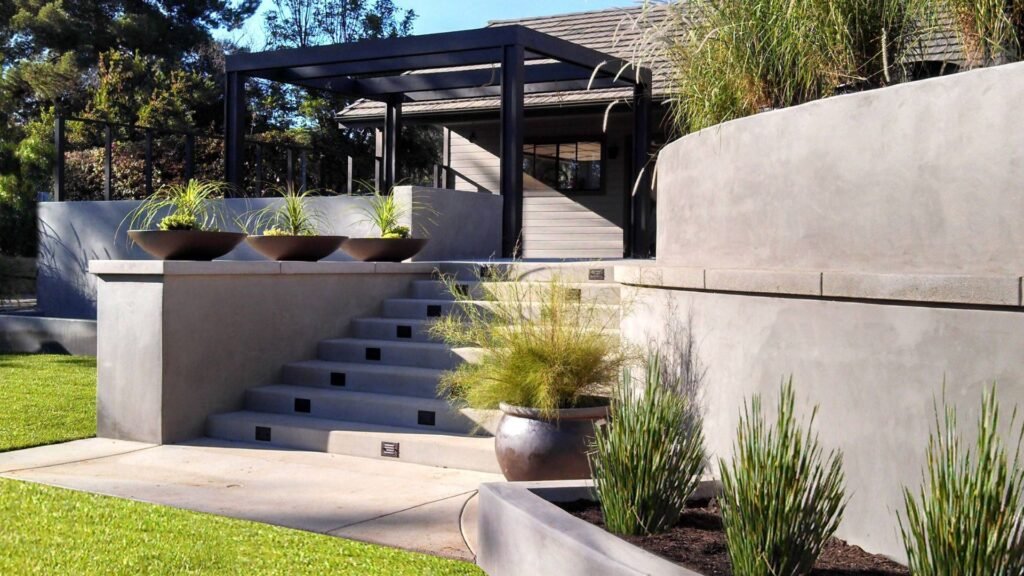
Factors Influencing The Cost Of Building A Retaining Wall In NZ
It takes money to build a retaining wall, especially in New Zealand where there are different building codes and different types of terrain. The choice of materials and the particulars of the construction site are just two of the variables that affect the total cost of building a retaining wall. Comprehending these variables can aid homeowners and developers in making well-informed choices and efficiently handling their financial plans. Let’s examine the main factors that influence retaining wall construction costs in New Zealand.
Material Costs
The type of material chosen for a retaining wall is one of the most critical factors influencing its overall cost. Common materials used in New Zealand include timber, concrete, and stone, each offering different aesthetic and functional benefits.
- Timber: Timber retaining walls are often the most cost-effective option. They are relatively easy to install and provide a natural look that blends well with many outdoor settings. However, timber may require more maintenance over time to prevent rot and insect damage, which can add to long-term costs.
- Concrete: Concrete retaining walls, including poured concrete and concrete blocks, offer greater durability and strength than timber. While more expensive initially, concrete walls often prove more cost-effective in the long run due to their low maintenance requirements and longer lifespan. They are also better suited for taller walls or those that need to support a significant amount of weight.
- Stone: Stone retaining walls are the most expensive option but provide a unique, high-end aesthetic. Natural stone is highly durable and can last for decades with minimal maintenance. The cost of stone can vary widely depending on the type and source, with locally sourced stone often being more affordable than imported varieties.
Labor Costs
Labor costs in New Zealand can vary significantly based on the project’s location and the required skill level. In general, labor costs in major cities like Hawkes Bay, Wellington, and Christchurch tend to be higher than in smaller towns and rural areas due to the higher cost of living and greater demand for skilled workers.
- Hawkes Bay: Being the largest city in New Zealand, Hawkes Bay typically has the highest labor costs. The demand for skilled laborers, including builders, engineers, and landscapers, is high, which drives up the price.
- Wellington: Labor costs in Wellington are generally slightly lower than in Hawkes Bay but still above the national average. This is partly due to the city’s challenging topography, which can complicate construction projects and increase the demand for skilled workers.
- Christchurch: Following the earthquakes, Christchurch has seen a boom in construction activity, leading to higher labor costs. However, as the city continues to rebuild, the supply of skilled labor is gradually catching up with demand, which may lead to more competitive pricing in the future.
Design and Engineering
The design and engineering of a retaining wall can significantly impact the cost, particularly if the wall is intended to be a focal point in the landscape or must support a substantial load. Complex designs that require precise engineering calculations and council approvals can add to the expense.
- Design Complexity: Simple, straightforward designs are generally less expensive to construct than more intricate ones. Curved walls, tiered designs, or walls with integrated steps or seating areas require more planning and labor, increasing costs.
- Engineering Requirements: Engineering costs will vary depending on the wall’s height, length, and the type of soil it is built on. Walls over a certain height or those supporting heavy loads may require a professional engineer’s input to ensure they meet safety standards and comply with local building codes.
- Council Approvals: Obtaining the necessary council approvals can also add to the cost. In some cases, a retaining wall may require resource consent or building consent, which involves fees and potentially additional design work to meet council requirements.
Site Preparation
The condition of the site where the retaining wall will be built plays a crucial role in determining the overall cost. Several factors related to site preparation can significantly impact the budget:
- Soil Type: The type of soil can affect the ease or difficulty of construction. Soft or loose soils may require additional reinforcement or deeper footings, increasing costs. Conversely, solid and stable soil types are easier to work with and less expensive to build on.
- Slope: The slope of the land is another critical factor. Building a retaining wall on a steep slope is more challenging and requires more time, equipment, and materials, all of which add to the cost.
- Accessibility: The ease of access to the site can also influence costs. If the site is difficult to reach or requires special equipment to transport materials, labor and transport costs may increase.
Height and Length of the Wall
The dimensions of the retaining wall are directly proportional to its cost. Larger walls require more materials, labor, and time to construct, significantly increasing the overall expense.
- Height: Taller walls need stronger materials and more substantial footings to ensure stability, especially in areas prone to earthquakes. As the height increases, so does the need for more engineering expertise, reinforcing materials, and potentially higher council approval costs.
- Length: Similarly, longer walls require more materials and labor. If the wall spans a considerable distance, additional support structures or tiering may be necessary, further adding to the cost.
Additional Features
Finally, any additional features added to the retaining wall can also impact the cost. While these features can enhance the wall’s functionality and appearance, they come with additional expenses.
- Drainage Solutions: Proper drainage is essential to prevent water from accumulating behind the wall, which could lead to failure. Installing a drainage system, such as weep holes, gravel backfill, or a perforated pipe, will add to the cost but is a necessary investment for long-term durability.
- Waterproofing: In some cases, especially for retaining walls located near water sources or in areas with heavy rainfall, waterproofing may be required. This process adds an extra layer of protection to the wall, but it also increases the initial construction cost.
- Aesthetic Finishes: Adding aesthetic finishes such as stucco, veneers, or decorative stones can significantly enhance the visual appeal of a retaining wall. However, these finishes require additional materials and labor, which can drive up the cost.
Several factors influence the cost of building a retaining wall in New Zealand. By understanding these variables, homeowners and developers can better plan their projects and ensure that they are both financially viable and structurally sound.

Breakdown Of Average Costs In NZ
It is essential to comprehend the average expenses associated with wall construction in New Zealand in order to properly plan and budget for your project. Knowing the cost variations based on material kinds and construction methods will help you make informed selections when building a modest garden wall or a complex structural wall for a sloped property. The following is a thorough analysis of the main variables influencing wall construction costs in New Zealand:
Cost Estimates by Material Type
The type of material you choose for your wall can significantly impact the overall cost of your project. Here’s a range of average costs per square meter for some popular wall materials in New Zealand:
- Timber: Timber is a versatile and relatively affordable option for many types of wall construction, especially for retaining and garden walls. The cost for timber walls generally ranges from NZD 100 to NZD 300 per square meter, depending on the type of wood and the complexity of the installation.
- Concrete: Concrete is a durable and long-lasting material that is ideal for both retaining walls and structural walls. The cost for concrete walls can range from NZD 200 to NZD 500 per square meter. Factors such as the type of concrete (precast or poured), the wall thickness, and additional finishes like textured surfaces or colored concrete can affect the price.
- Stone: Stone walls, whether natural or engineered, are a more premium choice due to their aesthetic appeal and durability. The cost of stone walls in New Zealand typically ranges from NZD 300 to NZD 700 per square meter. The price varies based on the type of stone (e.g., bluestone, schist, limestone), the sourcing location, and the complexity of the installation.
- Brick: Brick walls are a classic option that combines durability with a traditional look. The average cost of brick walls is between NZD 200 and NZD 400 per square meter. This cost can vary depending on the type of bricks used, the wall thickness, and any additional finishes or treatments.
- Gabion: Gabion walls, made from wire mesh filled with stones or other materials, offer a unique aesthetic and are often used for retaining purposes. The cost for gabion walls can range from NZD 150 to NZD 350 per square meter, depending on the materials used and the complexity of the construction.
Example Scenarios
To give you a clearer picture of potential costs, let’s consider a few example scenarios:
1. Small Backyard Wall: Imagine a small garden wall made of timber, measuring 10 square meters. With an average cost of NZD 150 per square meter, the total cost for materials would be around NZD 1,500. If you opt for a more premium timber type or include additional treatments for weather resistance, the cost could increase to around NZD 2,500.
2. Large Structural Wall for a Sloped Property: For a more complex scenario, consider a large retaining wall on a sloped property, using stone for both aesthetic and functional purposes. If the wall is 50 square meters and the average cost is NZD 500 per square meter, the total cost could reach NZD 25,000. Additional costs for excavation, drainage solutions, and professional installation could increase the overall cost to NZD 35,000 or more.
DIY vs. Hiring a Professional
When considering whether to undertake a wall construction project yourself or hire a professional contractor, it’s essential to weigh the potential cost savings against the possible hidden costs.
- DIY Projects: Taking the DIY route can save you on labor costs, which typically make up a significant portion of the overall expense. However, there are several considerations to keep in mind. If you lack experience, there might be a learning curve, and mistakes can lead to increased costs or compromised safety. Additionally, DIY projects often require the purchase or rental of tools and equipment, which can add to the initial cost.
- Hiring a Professional Contractor: Hiring a professional can be more expensive upfront, with labor costs potentially ranging from NZD 50 to NZD 150 per hour, depending on the expertise and location. However, professionals bring experience, tools, and resources that can ensure the job is done correctly and efficiently. They can also navigate any regulatory requirements, obtain necessary permits, and offer warranties on their work, providing peace of mind and reducing the risk of costly mistakes or repairs down the line.
Understanding the breakdown of average costs for wall construction in New Zealand involves considering several factors, including material types, project size, and whether you choose to DIY or hire a professional. By carefully weighing these factors, you can better plan your budget and ensure a successful project outcome.
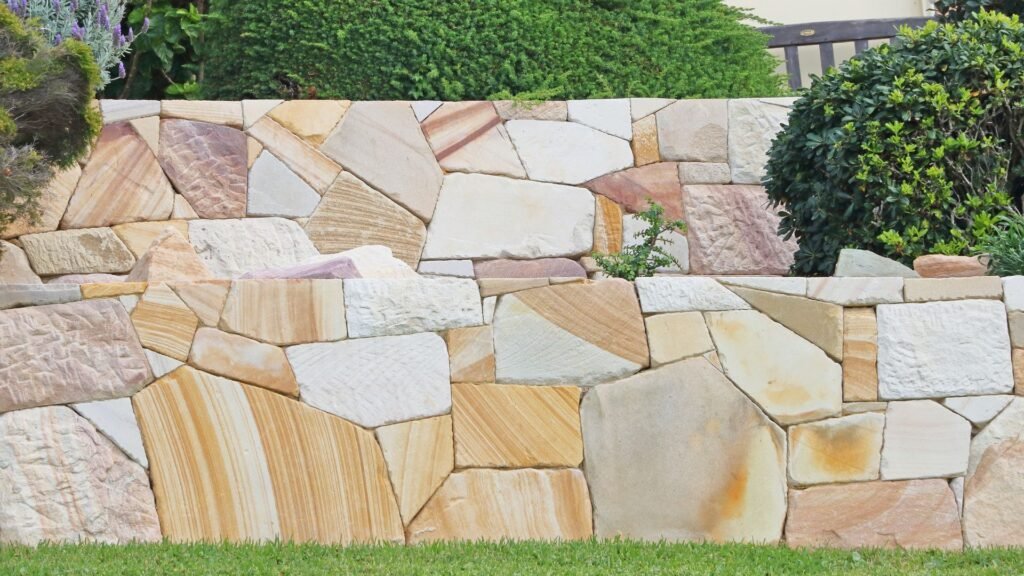
Budgeting Tips For Building A Retaining Wall
Building a retaining wall can be a valuable addition to your landscape, providing both functionality and aesthetic appeal. However, it’s essential to approach this project with a well-thought-out budget plan. Here are some practical budgeting tips to help you manage costs effectively and ensure that your retaining wall project stays within your financial means.
Planning and Research
The planning stage is one of the most important phases in any construction project, and retaining wall construction is no exception. It’s essential to take the time to do extensive planning and study before beginning construction. To begin with, ascertain why you have a retaining wall. Do you want to build a garden terrace, stop soil erosion, or just make your home appear better? Establishing your objectives will help direct the remainder of your planning procedure.
Getting many quotations from several contractors is the next stage after you have a clear idea of your goals. Here’s where doing extensive research pays off greatly. Obtaining multiple estimates will assist you prevent overpaying and provide you with a better understanding of the market pricing for your job. Furthermore, consider what’s included while comparing quotes. Some contractors might provide a lower upfront cost, but they might omit necessary services or supplies, which could result in unforeseen expenses down the road. You can avoid unanticipated costs by thoroughly questioning the prices and getting clarification on any unclear areas.
Material Selection
Choosing the right materials is a critical factor in determining both the cost and durability of your retaining wall. The selection process should balance budget constraints with the desired aesthetic and functional outcomes. There are various materials available, such as concrete blocks, natural stone, brick, and wood, each with its price point and maintenance requirements.
Concrete blocks, for instance, are a popular choice due to their affordability and durability. They come in various styles and finishes, allowing for customization to fit your landscape design. On the other hand, natural stone offers a more classic and timeless look but can be significantly more expensive. It’s also worth considering recycled materials, which can provide a unique aesthetic while being eco-friendly and potentially more cost-effective.
When selecting materials, think beyond the initial purchase price. Consider factors such as the material’s longevity, the climate conditions of your area, and how each option aligns with your overall landscape design. Sometimes, investing in a slightly more expensive material upfront can lead to long-term savings, as it may require less maintenance or have a longer lifespan.
Opting for Simple Designs
Design complexity is another factor that can heavily influence the cost of your retaining wall. While intricate designs with curves, terraces, and varying heights may look appealing, they often require more materials, labor, and time, which can quickly drive up costs. If you’re working with a limited budget, opting for a simpler design can be a smart choice.
Simple designs, such as straight walls or those with minimal curves, are not only easier to construct but also more cost-effective. They typically require fewer cuts in the material, less labor-intensive work, and reduced waste. Furthermore, straightforward designs can still be aesthetically pleasing and functional, especially when complemented with landscaping elements like plants or lighting.
When discussing design options with your contractor, ask for cost comparisons between simple and complex designs. This will give you a clearer understanding of the potential savings and help you make a more informed decision that aligns with your budget and aesthetic preferences.
Consider Long-Term Maintenance
While focusing on the initial construction costs is important, it’s equally crucial to consider the long-term maintenance expenses associated with different materials and constructions. Some materials, like wood, may have a lower upfront cost but require regular maintenance to prevent decay and insect damage. Others, like concrete or natural stone, might have higher initial costs but offer greater durability and lower maintenance requirements.
Think about the climate in your area and how it might affect your retaining wall over time. For instance, in regions with heavy rainfall, wood might deteriorate faster, leading to higher maintenance costs or even the need for replacement sooner than expected. Conversely, in drier climates, certain materials may perform better with minimal upkeep.
Moreover, maintenance isn’t just about materials; it also involves the structural integrity of the wall. Improperly built walls may suffer from drainage issues, leading to costly repairs. It’s wise to invest in proper drainage solutions during the construction phase to avoid future water-related damage. Consulting with a professional about the best materials and construction techniques for your specific location can help you avoid costly mistakes down the road.
By carefully planning and budgeting for your retaining wall project, you can create a structure that not only meets your functional and aesthetic needs but also fits within your financial constraints. From conducting thorough research and selecting the right materials to opting for simpler designs and considering long-term maintenance, each step plays a critical role in managing costs effectively. With these budgeting tips in mind, you’ll be well-equipped to build a retaining wall that enhances your property without breaking the bank.

Common Mistakes To Avoid
When undertaking any construction project, whether it’s a small home renovation or a large-scale commercial build, there are several common mistakes that can derail progress, increase costs, or result in substandard outcomes. Understanding these pitfalls and taking steps to avoid them can make the difference between a successful project and a costly failure. Here are three critical mistakes to watch out for:
1. Underestimating Costs
One of the most frequent mistakes people make in construction projects is underestimating the costs involved. This doesn’t just mean the cost of materials or labor; it encompasses everything from the initial planning stages to the final touches. Many people fail to account for hidden costs such as permits, inspections, design changes, and unexpected delays.
Why is this a problem?
When costs are underestimated, projects often run out of money before completion, leading to either a rush to finish with subpar materials or the need to seek additional funding. This not only delays the project but can also significantly increase the final budget. It’s crucial to create a comprehensive budget that considers all aspects of the project, including a contingency fund for unforeseen expenses. Conducting thorough research, consulting with professionals, and planning for the unexpected can prevent the unpleasant surprise of a budget shortfall.
How to avoid this mistake:
To avoid underestimating costs, start by creating a detailed list of all the materials and services required. Get multiple quotes for each to understand the price range and allow room for any price increases or extra costs. Additionally, include a contingency of about 10-20% of the total budget to cover unexpected expenses. Regularly review your budget and expenditures as the project progresses to stay on track.
2. Ignoring Local Regulations
Another common oversight in construction is failing to comply with local regulations and building codes. Every region has its own set of rules and regulations governing construction, which may include zoning laws, environmental guidelines, and safety standards. Not adhering to these regulations can result in severe penalties, including fines, forced modifications, or even demolition of the non-compliant structure.
Why is this important?
Ignoring local regulations can halt your project in its tracks. For instance, building without the necessary permits can lead to legal trouble or safety issues that could have been avoided. The process of obtaining permits and approvals can be lengthy and complicated, but it is essential to ensure that your project meets all legal and safety requirements. Additionally, failure to comply with local regulations can have long-term consequences, such as difficulty selling the property or facing legal action.
How to avoid this mistake:
Before starting any construction project, thoroughly research the local building codes and regulations. Contact your local council or building authority to understand the necessary permits and approvals required for your project. It is also beneficial to work with a professional who is familiar with local laws and can guide you through the permitting process. Make sure all necessary permits are in place before commencing work, and keep documentation on hand in case of inspections.
3. Poor Drainage Planning
Effective drainage is often overlooked in the planning stages, but it is one of the most critical aspects of a successful construction project. Poor drainage planning can lead to water damage, mold growth, and even structural damage over time. If water is not properly directed away from the building, it can cause foundations to shift, erode landscaping, and create a host of other problems that are costly to fix.
Why is proper drainage crucial?
Without proper drainage, water can accumulate around the foundation, seep into basements or crawl spaces, and create a damp environment conducive to mold and mildew. This not only poses a health risk to occupants but can also lead to expensive repairs. Additionally, water pooling can damage landscaping, erode soil, and affect the stability of the structure.
How to avoid this mistake:
Invest time in planning a robust drainage system that suits the topography of the land. Consider installing gutters, downspouts, French drains, and grading the land to direct water away from the building. Work with a qualified professional to design a drainage system that prevents water accumulation near the foundation. Regularly inspect and maintain the drainage system to ensure it remains effective over time.
Avoiding these common mistakes in construction projects can save you time, money, and a lot of headaches. By thoroughly planning your budget, ensuring compliance with local regulations, and prioritizing proper drainage, you set the foundation for a successful project. Remember, attention to detail in the early stages can prevent significant issues down the line, leading to a smooth and successful construction experience.
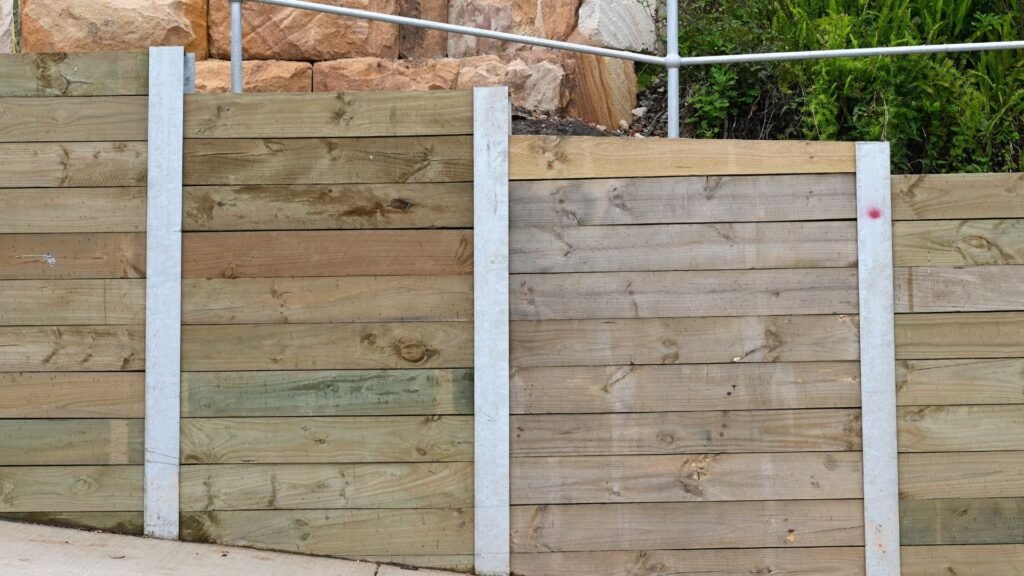
How To Choose The Right Contractor In NZ
Selecting the right contractor in New Zealand is a critical step when planning any home improvement or construction project. Whether you’re considering a kitchen renovation, a bathroom upgrade, or building a new home, the contractor you choose will significantly impact the quality of work and overall experience. This guide provides a comprehensive approach to finding a reputable contractor, asking the right questions, and understanding essential contract and warranty details to ensure your project is successful.
Finding Reputable Contractors
Finding a reputable contractor in New Zealand involves more than just a quick internet search. You want someone with a proven track record of delivering quality work on time and within budget. Here are some practical steps to help you find the best contractor for your needs:
1. Ask for Recommendations: Start by asking friends, family, or neighbors who have recently completed similar projects. Personal recommendations are invaluable because they come from trusted sources who can provide honest feedback on their experiences.
2. Check Online Reviews and Ratings: Websites like NoCowboys, Builderscrack, and Trade Me Services offer platforms where you can read reviews and ratings of contractors. Look for contractors with consistently high ratings and positive reviews, as this indicates a history of satisfied customers.
3. Verify Credentials and Licensing: Ensure the contractor holds the necessary licenses and certifications required by New Zealand law. A licensed building practitioner (LBP) is qualified to perform restricted building work, such as residential structural work and waterproofing. You can check the LBP register on the Ministry of Business, Innovation, and Employment (MBIE) website to verify a contractor’s status.
4. Review Past Work: Ask potential contractors for a portfolio of their previous work. This will give you an idea of their craftsmanship and style. Visiting ongoing job sites (with permission) can also provide insights into how they operate, maintain their workspace, and interact with clients.
5. Check References: Always ask for references from past clients and take the time to contact them. Ask about their experience working with the contractor, the quality of work, adherence to timelines, and how any issues were handled.
Questions to Ask
Once you have a shortlist of potential contractors, it’s essential to engage them in a detailed conversation to ensure they are the right fit for your project. Here are some crucial questions to ask during the hiring process:
1. What is Your Experience with Similar Projects?: Understanding a contractor’s experience with projects similar to yours can help gauge their expertise and suitability for the job. Contractors familiar with the specific requirements of your project type are more likely to anticipate potential challenges and provide practical solutions.
2. Can You Provide a Detailed Estimate?: A reputable contractor should provide a detailed estimate that includes a breakdown of costs for materials, labor, permits, and any other expenses. This transparency helps avoid unexpected costs and ensures you are on the same page from the outset.
3. What is Your Project Timeline?: Knowing when the contractor can start and how long the project will take is crucial. Ensure their proposed timeline aligns with your expectations and any deadlines you may have. Also, discuss potential delays and how they will be managed.
4. Who Will Be Onsite Managing the Project?: Clarify who will be responsible for overseeing your project daily. It’s vital to know whether the contractor you’re speaking with will be onsite or if it will be managed by a project manager or foreman. This helps establish clear lines of communication and accountability.
5. Do You Have Insurance?: Ensure the contractor has both liability insurance and worker’s compensation insurance. This protects you from any potential liability in case of accidents or damages during the project.
6. What is Your Warranty on Workmanship?: A reliable contractor should offer a warranty on their workmanship. Ask for details about what the warranty covers, how long it lasts, and the process for addressing any issues that arise after the project is completed.
Contract and Warranty Considerations
Once you’ve selected a contractor, it’s crucial to ensure that all terms are clearly defined in a written contract. This document should cover every aspect of the project, including timelines, costs, payment schedules, materials to be used, and specific details of the work to be done. Here’s what you need to consider:
1. Clear Scope of Work: The contract should provide a detailed description of the work to be performed. This includes specific materials, brands, and any particular construction techniques that will be employed. A well-defined scope helps prevent misunderstandings and disputes later on.
2. Payment Terms: Outline the payment schedule in your contract. It’s common to pay a deposit upfront, with subsequent payments tied to project milestones. Avoid contractors who demand full payment upfront, as this can be a red flag.
3. Change Orders: Specify how changes to the project will be handled. Sometimes, unexpected issues arise, or you may decide to make changes after work has started. The contract should include a process for approving and pricing any changes.
4. Warranty Details: Ensure the contract clearly states the warranty terms for both materials and workmanship. Understand what is covered, the duration of the coverage, and the process for making a warranty claim.
5. Dispute Resolution: Include a clause on how disputes will be resolved if they arise. This could be through mediation, arbitration, or another agreed-upon method. Having this in writing can save both parties time and money if disagreements occur.
By carefully vetting contractors, asking the right questions, and ensuring a clear contract and understanding of warranties, you can greatly increase the chances of a successful project. Remember, the goal is to find a contractor who is not only skilled and experienced but also transparent, reliable, and easy to work with. Your home is one of your most significant investments, so it’s worth taking the time to choose the right professional for the job.
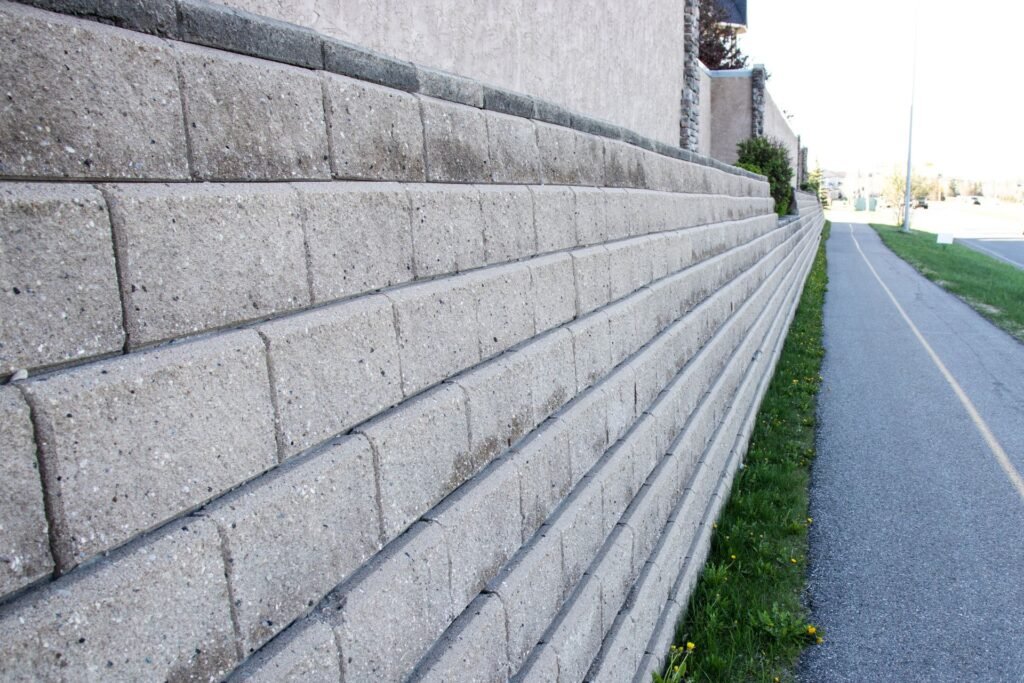
FAQs: About Cost Of Building Retaining Wall In NZ
What factors affect the cost of building a retaining wall in New Zealand?
The cost of building a retaining wall in New Zealand is influenced by several factors, including the choice of materials (timber, concrete, stone, etc.), the height and length of the wall, site preparation requirements, labor costs, design complexity, and additional features like drainage and waterproofing.
What are the most common materials used for retaining walls in NZ, and how do they impact the cost?
Common materials for retaining walls in NZ include timber, concrete, stone, and gabion baskets. Timber is typically the most cost-effective but may require more maintenance. Concrete options, such as poured concrete and concrete blocks, are more durable but can be more expensive. Stone walls offer a natural aesthetic but tend to be the most costly due to the material and labor involved.
How much does it cost to build a retaining wall per square meter in NZ?
The cost to build a retaining wall in New Zealand typically ranges from $150 to $400 per square meter. The price varies based on the material chosen, the complexity of the wall’s design, and site-specific factors like soil type and access.
Do I need a permit to build a retaining wall on my property in New Zealand?
Yes, in many cases, you will need a permit to build a retaining wall on your property in New Zealand, especially if the wall exceeds a certain height (usually 1.5 meters) or if it is near a property boundary. It’s important to check with your local council for specific regulations and requirements.
Can I build a retaining wall myself, or should I hire a professional?
While DIY retaining walls can save on labor costs, they are best suited for smaller projects with minimal structural requirements. Hiring a professional is recommended for larger or more complex walls, particularly those that require engineering expertise, council approvals, and advanced construction techniques.
How long does it take to build a retaining wall?
The time required to build a retaining wall depends on factors like the wall’s size, material, complexity, and site conditions. A small DIY project may take a weekend, while larger, professionally built walls could take several weeks to complete.
What are the long-term maintenance costs of a retaining wall?
Long-term maintenance costs for a retaining wall depend on the material used and environmental factors. Timber walls may require regular treatments to prevent rot and pest damage, while stone and concrete walls generally need less maintenance but should be inspected periodically for cracks or movement.
How do I choose the right contractor for building a retaining wall in NZ?
When choosing a contractor, consider their experience, reputation, and past projects. It’s advisable to get multiple quotes, check references, and ensure the contractor is familiar with local regulations and has adequate insurance and warranties in place.
What are the common mistakes to avoid when planning a retaining wall project?
Common mistakes include underestimating costs, ignoring local council regulations, inadequate drainage planning, and choosing inappropriate materials for the site conditions. Proper planning and consultation with professionals can help avoid these pitfalls.
How can I reduce the cost of building a retaining wall without compromising quality?
To reduce costs, opt for simpler designs, choose cost-effective materials like timber, and undertake proper planning to avoid unexpected expenses. Getting multiple quotes and considering a mix of DIY and professional work can also help manage costs effectively.
Conclusion
Building a retaining wall in New Zealand is an important investment that requires careful planning and consideration of various factors to ensure a successful outcome. The cost of constructing a retaining wall is influenced by several key elements, including the choice of materials (such as timber, concrete blocks, stone, or gabion baskets), labor and installation costs, site preparation, drainage and waterproofing solutions, and any necessary permits or regulations. Material selection not only affects the price but also the maintenance and durability of the wall, while labor costs are determined by the complexity of the design and site conditions. Proper site preparation and effective drainage are crucial to the wall’s stability and longevity, preventing water damage and structural issues. Additionally, understanding local council requirements and obtaining the necessary permits can help avoid costly delays. As you plan your project, it’s essential to set a clear budget and define your needs, whether for functional purposes or aesthetic appeal. To ensure the best results, consider reaching out to local professionals for quotes and consulting with suppliers to find the right materials at competitive prices. Start planning your retaining wall project today to enhance your property’s value and functionality with a well-built, durable structure that will stand the test of time.
This blog was brought to you and referenced from: https://builderconnect.co.nz/blog/ultimate-guide-to-cost-of-building-retaining-walls-nz/
About the Author:
Mike Veail is a recognized digital marketing expert with over 6 years of experience in helping tradespeople and small businesses thrive online. A former quantity surveyor, Mike combines deep industry knowledge with hands-on expertise in SEO and Google Ads. His marketing strategies are tailored to the specific needs of the trades sector, helping businesses increase visibility and generate more leads through proven, ethical methods.
Mike has successfully partnered with numerous companies, establishing a track record of delivering measurable results. His work has been featured across various platforms that showcase his expertise in lead generation and online marketing for the trades sector.
Learn more about Mike's experience and services at https://theleadguy.online or follow him on social media:

